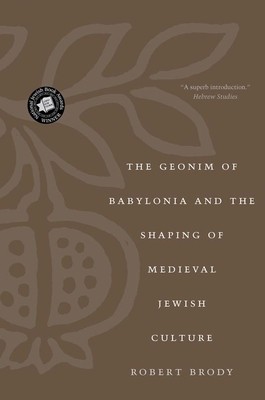
- We will send in 10–14 business days.
- Author: Robert Brody
- Publisher: Yale University Press
- ISBN-10: 030018932X
- ISBN-13: 9780300189322
- Format: 15.5 x 23.4 x 2.8 cm, softcover
- Language: English
- SAVE -10% with code: EXTRA
The Geonim of Babylonia and the Shaping of Medieval Jewish Culture (e-book) (used book) | bookbook.eu
Reviews
Description
The Geonic period from about the late sixth to mid-eleventh centuries is of crucial importance in the history of Judaism. The Geonim, for whom this era is named, were the heads of the ancient talmudic academies of Babylonia. They gained ascendancy over the older Palestinian center of Judaism and were recognized as the leading religious and spiritual authorities by most of the world's Jewish population. The Geonim and their circles enshrined the Babylonian Talmud as the central canonical work of rabbinic literature and the leading guide to religious practice, and it was a predominantly Babylonian version of Judaism that was transplanted to newer centers of Judaism in North Africa and Europe. Robert Brody's book--the first survey in English of the Geonic period in almost a century--focuses on the cultural milieu of the Geonim and on their intellectual and literary creativity.
Brody describes the cultural spheres in which the Geonim were active and the historical and cultural settings within which they functioned. He emphasizes the challenges presented by other Jewish institutions and individuals, ranging from those within the Babylonian Jewish setting--especially the political leadership represented by the Exilarch--to the competing Palestinian Jewish center and to sectarian movements and freethinkers who rejected rabbinic authority altogether. He also describes the variety of ways in which the development of Geonic tradition was affected by the surrounding non-Jewish cultures, both Muslim and Christian.EXTRA 10 % discount with code: EXTRA
The promotion ends in 15d.02:40:42
The discount code is valid when purchasing from 10 €. Discounts do not stack.
- Author: Robert Brody
- Publisher: Yale University Press
- ISBN-10: 030018932X
- ISBN-13: 9780300189322
- Format: 15.5 x 23.4 x 2.8 cm, softcover
- Language: English English
The Geonic period from about the late sixth to mid-eleventh centuries is of crucial importance in the history of Judaism. The Geonim, for whom this era is named, were the heads of the ancient talmudic academies of Babylonia. They gained ascendancy over the older Palestinian center of Judaism and were recognized as the leading religious and spiritual authorities by most of the world's Jewish population. The Geonim and their circles enshrined the Babylonian Talmud as the central canonical work of rabbinic literature and the leading guide to religious practice, and it was a predominantly Babylonian version of Judaism that was transplanted to newer centers of Judaism in North Africa and Europe. Robert Brody's book--the first survey in English of the Geonic period in almost a century--focuses on the cultural milieu of the Geonim and on their intellectual and literary creativity.
Brody describes the cultural spheres in which the Geonim were active and the historical and cultural settings within which they functioned. He emphasizes the challenges presented by other Jewish institutions and individuals, ranging from those within the Babylonian Jewish setting--especially the political leadership represented by the Exilarch--to the competing Palestinian Jewish center and to sectarian movements and freethinkers who rejected rabbinic authority altogether. He also describes the variety of ways in which the development of Geonic tradition was affected by the surrounding non-Jewish cultures, both Muslim and Christian.

Reviews